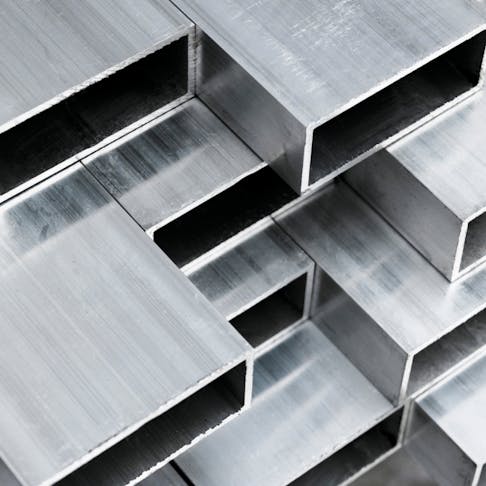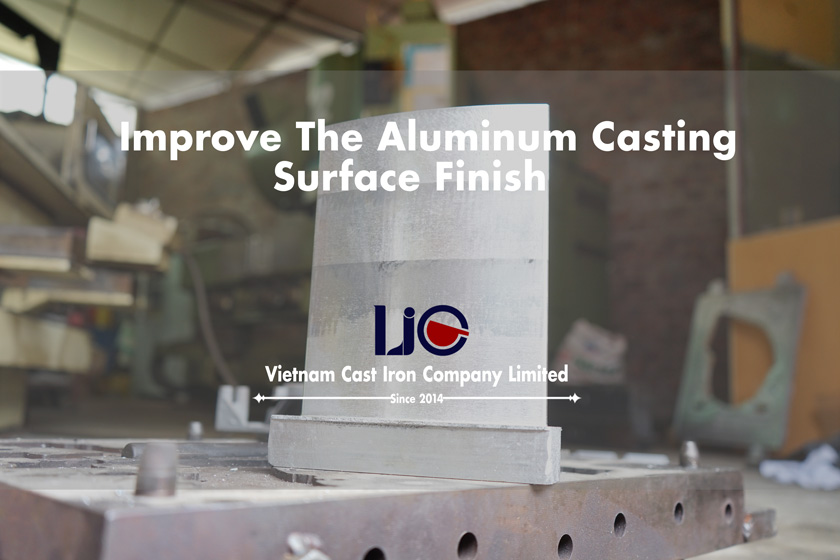Why Aluminum Casting is the go-to solution for consumer electronics
Understanding the Advantages and Selections of Aluminum Castings in Sector
Aluminum castings have actually become increasingly essential throughout different markets as a result of their unique buildings and manufacturing flexibility. Their lightweight and corrosion-resistant nature makes them appropriate for demanding applications. Different casting methods enable precise and intricate designs. As industries evolve, understanding the range of light weight aluminum spreading alternatives and their advantages is necessary. This expedition questions regarding their future role in manufacturing and sustainability. What exists in advance for light weight aluminum in these fields?
The Essentials of Aluminum Casting Processes
Aluminum spreading processes vary in technique, they all share a typical objective: to change molten light weight aluminum right into specific forms and parts. The key methods of aluminum casting include sand spreading, die spreading, and financial investment casting. In sand spreading, molds are created making use of sand, enabling elaborate designs yet usually causing a rough surface area finish. Die casting employs high-pressure shot of molten light weight aluminum into steel mold and mildews, generating high precision and smooth surfaces, ideal for automation. Financial investment spreading, or lost-wax spreading, includes developing a wax pattern coated with a ceramic shell, supplying remarkable information and dimensional precision. Each method has its particular applications and factors to consider, including price, manufacturing volume, and complexity of the forms generated. Comprehending these fundamental methods is important for markets that count on aluminum castings to satisfy their layout and useful needs.
Secret Advantages of Using Aluminum Castings
Aluminum castings provide countless benefits that make them a favored choice in various sectors. One of the crucial advantages is their light-weight nature, which allows for easier handling and decreased delivery expenses. This particular adds to improved energy effectiveness, specifically in automotive and aerospace applications. Additionally, light weight aluminum shows outstanding rust resistance, prolonging the life-span of parts and minimizing maintenance needs.
One more advantage is the convenience of light weight aluminum castings, which can be molded into complex shapes, enabling ingenious styles that standard products might not fit. The thermal and electric conductivity of light weight aluminum additionally makes it ideal for applications requiring heat dissipation or efficient electrical connections. Furthermore, aluminum castings are recyclable, lining up with sustainability goals and minimizing ecological effect. Generally, the mix of stamina, sturdiness, and versatility makes aluminum castings a vital part in modern-day manufacturing methods throughout several fields.
Typical Sorts Of Aluminum Castings
Aluminum castings are generated via different methods, each matched for various applications and demands. Among one of the most typical techniques are sand spreading, which uses versatility and cost-effectiveness, and die spreading, recognized for its accuracy and effectiveness. Comprehending these processes is important for selecting the ideal spreading technique for particular commercial demands.
Sand Casting Refine
A considerable part of aluminum castings in industry is produced via the sand spreading procedure, which is renowned for its adaptability and cost-effectiveness. This method entails producing a mold and mildew from a sand mix, enabling the manufacturing of complex shapes and huge elements. Sand spreading is particularly useful for small to medium-sized manufacturing runs, as it requires very little first investment in tooling. The procedure begins with pattern making, adhered to by mold prep work, putting molten light weight aluminum, and finally, cooling down and finishing. The high thermal conductivity of aluminum warranties even cooling, reducing the danger of issues. Consequently, sand spreading continues to be a preferred option for suppliers seeking effectiveness and flexibility in their aluminum casting applications.
Die Casting Techniques
Die casting strategies stand for a highly efficient method for creating light weight aluminum castings, specifically matched for high-volume manufacturing. These techniques primarily include two typical kinds: warm chamber and cool chamber pass away spreading. In hot chamber die casting, the liquified aluminum is injected into the mold from a tank that is warmed, making it perfect for low-melting-point alloys. Conversely, cold chamber die casting includes pouring the liquified light weight aluminum into a separate chamber prior to injection, which accommodates higher melting-point materials. Both methods offer precision fit intricate geometries and attaining superb surface area coatings. Furthermore, die casting is known for its rapid cycle times, reducing production prices while keeping uniformity in high quality across large quantities of components.
Applications in the Automotive Sector
Changing automobile style and performance, aluminum castings play a necessary duty in the auto sector. These castings add significantly to weight reduction, enhancing fuel effectiveness and general automobile characteristics. Trick applications consist of engine blocks, transmission real estates, and suspension elements, where their lightweight nature and stamina are vital.
Aluminum castings likewise allow for complex geometries, enabling producers to create elaborate designs that maximize air flow and decrease drag. This capability is particularly helpful in electric and hybrid automobiles, where efficiency and efficiency are extremely important.
Furthermore, the corrosion resistance of light weight aluminum extends the life-span site here of automobile components, decreasing upkeep expenses and improving automobile reliability. The adaptability of aluminum castings supports both mass manufacturing and custom-made applications, making them a preferred choice amongst automotive designers and designers. Aluminum Casting. As the industry continues to innovate, light weight aluminum castings will remain an essential aspect in the pursuit of advanced auto modern technologies
Aerospace Industry Use
In the aerospace industry, aluminum castings are important to the layout and capability of airplane components. These castings are used in numerous applications, consisting of engine components, architectural components, and interior fittings. Their lightweight nature adds to boosted fuel effectiveness and total efficiency, which is vital in aerospace design.
Aluminum castings additionally offer outstanding strength-to-weight proportions, enabling suppliers to develop intricate designs without compromising structural stability. The capability to create complicated geometries makes light weight aluminum casting a recommended selection for parts that call for accuracy and integrity.
In addition, light weight aluminum's resistance to deterioration improves the durability of aerospace parts, decreasing maintenance expenses and boosting safety and security (Aluminum Casting). The spreading process permits high-volume manufacturing, fulfilling the market's demands for performance. On the whole, light weight aluminum castings play a critical role beforehand aerospace innovation and optimizing airplane style, adding to the field's continuous developments

Advantages Over Various Other Materials
Aluminum castings offer considerable advantages over various other materials, making them a recommended option in various sectors. One of the key advantages is their lightweight nature, which adds to lowered energy intake and enhanced efficiency in applications such as automobile and aerospace. Additionally, aluminum displays excellent rust resistance, permitting extended resilience and lowered maintenance expenses.
The product's premium thermal and electric conductivity additionally boosts its charm, especially in applications calling for warmth dissipation or efficient energy transfer. Aluminum Casting. Aluminum castings additionally offer excellent dimensional security, ensuring specific tolerances and decreasing the chance of problems throughout the production process
In addition, the versatility of aluminum enables for intricate shapes and elaborate styles, which can be attained via different casting techniques. This flexibility makes aluminum an important choice for makers intending to introduce while keeping cost-effectiveness and top quality. To conclude, light weight aluminum castings attract attention as a result of their special combination of residential properties that provide to varied industrial demands.
Future Fads in Aluminum Casting Modern Technology
Future trends in aluminum casting modern technology are increasingly concentrated on automation and the growth of innovative alloys. Automation stands to boost efficiency and accuracy in casting procedures, minimizing labor expenses and improving product consistency. Simultaneously, innovations in alloy solutions guarantee to broaden the series of applications for aluminum castings, dealing with specific efficiency demands in different industries.
Automation in Casting Processes

Advanced Alloys Advancement
With the recurring evolution of material science, the development of sophisticated alloys is established to change aluminum casting innovation considerably. These ingenious alloys are made to boost mechanical buildings, corrosion resistance, and thermal stability, catering to diverse industrial applications. Researchers are concentrating on crossbreed alloys that include components such as magnesium, silicon, and zinc to attain peak efficiency. Additionally, advancements in computational modeling and simulation are enabling the prediction of alloy habits under different conditions, improving the style process. The combination of reusing innovations is likewise ending up being necessary, permitting makers to generate high-performance light weight aluminum castings while decreasing ecological effect. As these patterns proceed, the light weight aluminum spreading industry is likely to witness substantial improvements in efficiency, sustainability, and product quality.
Regularly Asked Inquiries
Exactly How Is Aluminum Casting Ecologically Friendly?
The question of aluminum spreading's ecological friendliness arises from its recyclability and reduced power usage compared to various other metals. Additionally, advancements in lasting methods further boost its environmentally friendly reputation within producing procedures.
What Is the Normal Life Expectancy of Aluminum Castings?
The common life-span of light weight aluminum castings differs based upon application and setting, usually ranging from several years to decades. Factors such as direct exposure to corrosive components and mechanical stress can substantially influence their toughness and long life.
Can Aluminum Castings Be Recycled?
Aluminum castings can indeed be reused. This process substantially minimizes waste and conserves sources, allowing makers to reuse products efficiently. Reusing aluminum castings adds to sustainability and decreases the environmental influence related to light weight aluminum production.
What Are the Usual Defects in Aluminum Castings?
Typical issues in aluminum castings consist of porosity, shrinkage, misalignment, and surface area imperfections. These problems can develop from inadequate putting methods, inappropriate alloy composition, or inadequate air conditioning, inevitably affecting the high quality and efficiency i loved this of the final product.
Exactly how Do I Pick the Right Aluminum Casting Process?
Choosing the appropriate light weight aluminum spreading procedure requires assessing manufacturing volume, component intricacy, and desired buildings. Factors such as expense, lead time, and product qualities likewise affect the choice, making certain ideal results for certain applications.